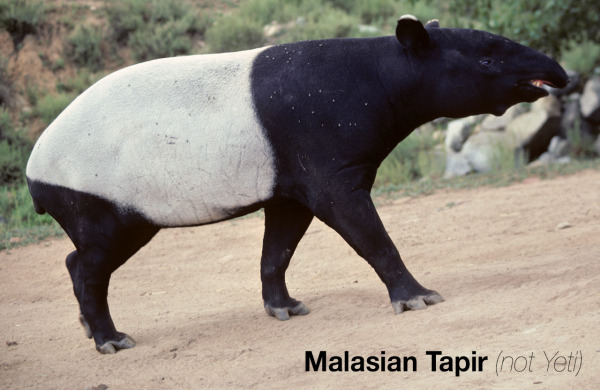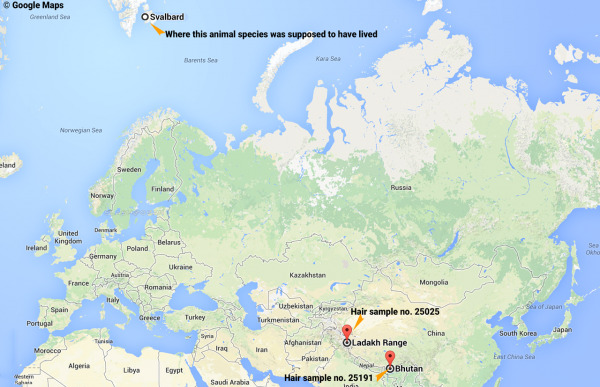Bigfoot hair samples tested by Oxford for science
The tests you're about to read about began all the way back in the year 2012, when researchers at Oxford University and the Lausanne Museum of Zoology sent out the call for Yeti hair. It was then that the hair samples began to arrive. Run and later written up by Sykes B.C., Mullis R.A., Hagenmuller C., Melton T.W. & Sartori M., a total of 36 hair samples supposed to have (possibly) belonged to the legendary Bigfoot were put to the test.
The test began with cleaning, then DNA extraction from each of the 36 hair samples sent from around the world. A segment of mitochondrial 12S ribosomal DNA was amplified, sequenced, and identified. The sample results turned out as follows:
• American black bear (6 samples)
• Brown bear (2 samples)
• Canid (4 samples)
• Cow (4 samples)
• Deer (1 sample)
• Horse (4 samples)
• Human (1 sample)
• Malaysian tapir (1 sample)
• North American porcupine (1 sample)
• Raccoon (2 samples)*
• Serow (1 sample)
• Sheep (1 sample)
*Of special significance – or oddity, if you prefer – was the fact that the raccoon hair was collected in Russia, far from its natural habitat. Unfortunately, no DNA was collected that was from a Yeti or otherwise unidentifiable human-like source.

On the other hand, two samples resulted in matches to a creature by the name of Ursus maritimus. This is otherwise known as a a Pleistocene polar bear, an animal that was assumed to have been extinct 40,000 years ago. This bear came from a very specific area only: Svalbard, a Norwegian archipelago situated in the Arctic Ocean.
According to the paper, these two hair samples came from extremely disparate locations.
"Hair sample no. 25025 came from an animal shot by an experienced hunter in Ladakh, India ca 40 years ago who reported that its behaviour was very different from a brown bear Ursus arctos with which he was very familiar."

"Hair sample no. 25191 was recovered from a high altitude (ca 3500 m) bamboo forest in Bhutan and was identified as a nest of a migyhur, the Bhutanese equivalent of the yeti."
On the other hand again, The Guardian's "GrrlScientist" contacted postdoctoral researcher Frank Hailer from the Biodiversity and Climate Research Centre (Biodiversität und Klima Forschungszentrum) in Germany. He took the DNA sequences reported in the original paper and found them to be a 100-percent match to a polar bear found "somewhere between Sibera and Alaska" just 10 years ago.
His findings also showed the original Pleistocene polar bear sequence to be slightly off from what's reported by the paper – off by "one position," as it were. Bear this tip in mind – sometimes mistakes happen.
"Does this evidence disprove the legends of the Yeti, Migyhur, Almasty, Sasquatch/Bigfoot? It does not," writes Norman MacLeod, the Keeper of Palaeontology at London's Natural History Museum in the same issue of the Proceedings this paper was published in. He continued, "Rather than persisting in the view that they have been 'rejected by science', advocates in the cryptozoology community have more work to do in order to produce convincing evidence for anomalous primates and now have the means to do so."
This study sets the bar. Now that more than 30 hairs have been tested, we can test the rest. Get your hair packs out, it's time to get proving!
SOURCE: "Genetic analysis of hair samples attributed to yeti, bigfoot and other anomalous primates" Proceedings of the Royal Society B, doi:10.1098/rspb.2014.0161 (open access).
